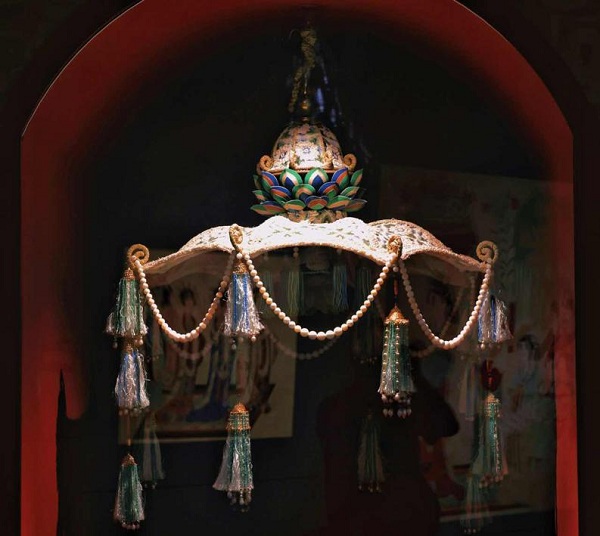

Reproductions of cultural relics, murals and Buddha sculptures from the Dunhuang Mogao Grottoes are shown at Wuhan University's Wanlin Art Museum. The exhibit will run until September. [Photo provided to chinadaily.com.cn]
For four decades, archaeologists and scientists have worked to protect the Mogao Grottoes at Dunhuang, a world heritage site in Northwest China.
Instead of limiting tourist number, they are bringing the ancient cultural heritage to a wider audience through digitization.
More than 3,000 miles from Dunhuang, the Mogao caves, murals and painted sculptures are meeting audiences at the Wanlin Art Museum on the campus of Wuhan University in Wuhan, Hubei province.
"We are proud to see the exhibition of Dunhuang art and culture at Wuhan University," said Huang Xianfeng, professor of remote engineering at the university.
The exhibition is special for Huang, who has been part of the scientific team digitizing Dunhuang in recent decades.
"Technology has transformed the way ancient culture is inherited," Huang said. "Digital recording, protection and replication has allowed more people to get in touch with ancient civilization."
Thanks to four decades of digitization, residents from Wuhan can now observe the ancient wonders from home during the four-month exhibition from May 18 to Sept 18. And it's free.
"I have been to Dunhuang at least 50 times and always spend a whole day inside the caves," Huang said, noting that his ankles often hurt in winter because of that.
"In the early years, the biggest challenge was not the freezing cold but lack of appropriate equipment," he recalled.
Based on modern photographic techniques and remote sensing technology, Huang and others collected data on the cultural relics — mainly photos and sensing footage — and created a digital copy of Dunhuang online.
"Because the murals and Buddhas have angles, deformation could easily happen," he said. The sensing requires natural light, which means teams could only work in daytime.
That was in 2007, when Huang had just earned his doctoral degree. Later, the project went outside the caves.
"From 2009, we began to record outside, the location and the distance between each, as well as the thickness," he said. "The three-dimensional pictures and data of Dunhuang are support for scientists to protect the caves."
Based on the digitized data and 3D printing technology, scientists are now able to recreate Dunhuang in other places.
During the exhibition, 30 cultural relics, along with 168 replicas of paintings and murals, are on display, according to Peng Jiao, a staff member at Wanlin Art Museum.
Cai Zhuting, a law student at Wuhan University and a volunteer guide for the exhibition, said it represents "a good chance to get a close look at the relics, even though it is challenging to memorize the guide transcripts."
Beyond Wuhan, residents in Beijing also can experience close observation at home of the digitized Dunhuang. Since July, a three-year exhibition of Dunhuang has been open to public at the National Base for International Cultural Trade in the capital. It includes murals, grottoes, painted sculptures and other items of cultural heritage.